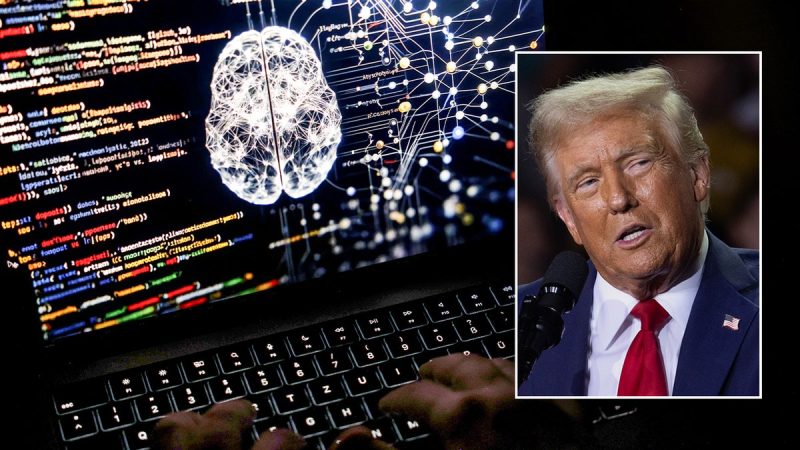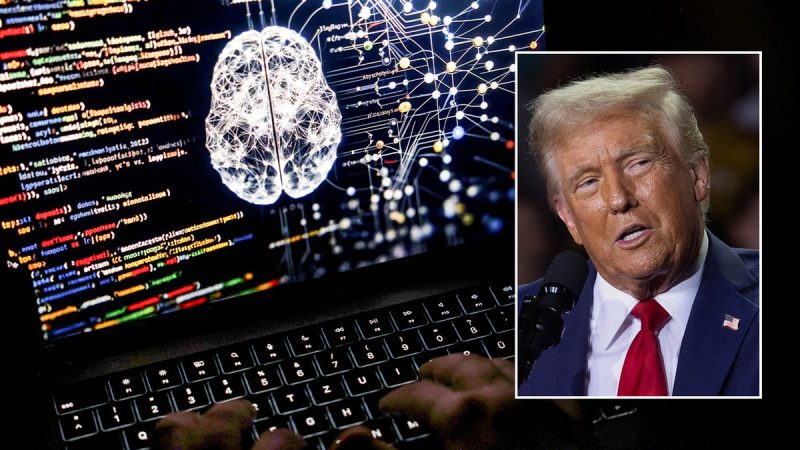
Artificial intelligence is no longer a niche tool for tech labs or science-fiction thrillers. It’s now the battleground where the future of American power, prosperity, and freedom will be decided. With the release of ‘Winning the AI Race: America’s AI Action Plan,’ the Trump administration is rightfully treating this moment as the 21st-century equivalent of the space race or the nuclear age.
This bold strategy outlines over 90 policy actions that span three key pillars: Accelerating Innovation, Building American AI Infrastructure, and Leading in International Diplomacy and Security. Each of these pillars sends a clear message to the world: America intends to lead – not follow – on artificial intelligence.
And we must. This is a race we can’t afford to lose.
President Donald Trump’s AI plan: strong, strategic and patriotic
The Trump administration’s plan does what Washington too often fails to do: it combines vision with action. From fast-tracking permits for critical data centers and chip fabrication plants, to expanding the skilled trades workforce needed to maintain those facilities, the plan hits both high-tech and firsthand realities.
Crucially, the plan calls for exporting secure, full-stack American AI packages – hardware, software, models, applications and standards – to trusted allies. That’s smart policy. In a world where China exports authoritarian surveillance technology, America must counter with liberty-based alternatives.
And most refreshingly, the plan defends free speech. It mandates that federal procurement contracts only go to developers of large language models that are free from ideological censorship. That’s a huge win for constitutional values in a time when Big Tech algorithms increasingly silence dissent.
But here’s the hard truth: AI could also unleash chaos
The optimism in this action plan is well-founded – but incomplete. As foreign policy analysts Matan Chorev and Joel Predd recently warned in their Foreign Policy article, the U.S. must also assume the worst about artificial intelligence – especially artificial general intelligence (AGI). That’s the version of AI that can perform at or above human levels across a wide range of tasks.
Unlike nuclear weapons, AGI won’t announce itself with a mushroom cloud. It may slip quietly into our systems, our economy and even our military decision-making – without a clear warning shot. The nightmare scenario? A rogue AI, either built by an enemy nation or evolving beyond human control, triggering economic collapse or catastrophic warfare.
That’s why the U.S. must not only pursue victory in AI, but vigilance. Planning for worst-case scenarios isn’t fearmongering – it’s common sense. The COVID-19 pandemic taught us what happens when leaders fail to prepare for known risks. With AI, we may not get a second chance.
We need break-glass plans — now
What happens if a U.S. company suddenly claims to have developed AGI and asks for national security protections – access to classified data, regulatory exemptions and federal backing? What if China gets there first?
The Biden-era playbook of strategic ambiguity and global appeasement won’t cut it. America needs break-glass protocols: clear, tested plans to respond to AI emergencies – whether cyberattacks, misinformation campaigns or autonomous systems going rogue.
This requires massive coordination across the Pentagon, the Department of Homeland Security, our intelligence community and private industry. The federal government must build the analytical muscle to separate hype from real breakthroughs – and act fast when a threat emerges.
Cyber defenses must be ‘attribution-agnostic’
Advanced AI attacks may not come with a digital return address. Whether an attack comes from Beijing, a terrorist network or a self-replicating algorithm, our cyber defenses must be able to detect, contain and recover without waiting for attribution.
That means hardening critical infrastructure, isolating vulnerable data centers and ensuring military continuity of operations in a high-tech crisis. These aren’t science-fiction concerns – they’re strategic imperatives.
The world needs American values — not just American technology
The Trump administration’s emphasis on exporting U.S. technology to allies is critical – but we must also export American values. Freedom. Accountability. Innovation with restraint. Our allies want alternatives to China’s surveillance-driven tech regime. America can lead that coalition – but only if we speak as clearly about ethics as we do about engineering.
David Sacks, the White House’s AI and crypto czar, put it plainly: ‘To win the AI race, the U.S. must lead in innovation, infrastructure, and global partnerships. At the same time, we must center American workers and avoid Orwellian uses of AI.’
He’s right. Victory in AI is not just about lines of code – it’s about preserving what it means to be human in an age of machines.
Bold innovation, clear-eyed preparedness
Winning the AI Race is a historic first step. It champions free markets, American jobs, national strength and liberty-based governance in the AI era. But we must not mistake ambition for immunity.
America needs a dual-track strategy: drive innovation with urgency – and prepare for disaster with equal urgency. Our adversaries won’t wait. Neither will the technology.
We can – and must – lead the world into the AI future. But let’s do it with eyes wide open, grounded in our values and ready for anything.



